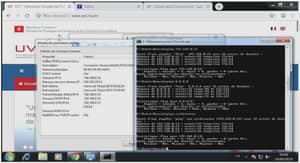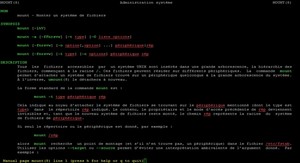Red Hat Enterprise Linux 7 DM Multipath
Device mapper multipathing (DM-Multipath) allows you to configure multiple I/O paths between server nodes and storage arrays into a single device. T hese I/O paths are physical SAN connections that can include separate cables, switches, and controllers. Multipathing aggregates the I/O paths, creating a new device that consists of the aggregated paths. DM-Multipath can provide failover in an active/passive configuration. In an active/passive configuration, only half the paths are used at any time for I/O. If any element of an I/O path (the cable, switch, or controller) fails, DM-Multipath switches to an alternate path. DM-Multipath can be configured in active/active mode, where I/O is spread over the paths in a round- robin fashion. In some configurations, DM-Multipath can detect loading on the I/O paths and dynamically re-balance the load.
In the example shown in Figure 1.2, “Active/Passive Multipath Configuration with T wo RAID Devices”, there are two I/O paths to each RAID device (just as there are in the example shown in Figure 1.1, “Active/Passive Multipath Configuration with One RAID Device”). With DM-Multipath configured, a failure at any of the points of the I/O path to either of the RAID devices will cause DM-Multipath to switch to the alternate I/O path for that device. Figure 1.3, “Active/Active Multipath Configuration with One RAID Device” shows an active/active configuration with 2 HBAs on the server, 1 SAN switch, and 2 RAID controllers. T here are four I/O paths from the server to a storage device..
If your storage array supports DM-Multipath and is not configured by default, you may need to add it to the DM-Multipath configuration file, m ultipath.conf. For information on the DM-Multipath configuration file, see Chapter 4, The DM-Multipath Configuration File. Some storage arrays require special handling of I/O errors and path switching. T hese require separate hardware handler kernel modules. DM-Multipath includes compiled-in default settings that are suitable for common multipath configurations. Setting up DM-multipath is often a simple procedure. 2. Create the configuration file and enable multipathing with the m pathconf command. You can also start the multipath daemon with this command if you do not need to edit the configuration file.
Without DM-Multipath, each path from a server node to a storage controller is treated by the system as a separate device, even when the I/O path connects the same server node to the same storage controller. DM-Multipath provides a way of organizing the I/O paths logically, by creating a single multipath device on top of the underlying devices. Each multipath device has a World Wide Identifier (WWID), which is guaranteed to be globally unique and unchanging. By default, the name of a multipath device is set to its WWID. Alternately, you can set the user_friendly_nam es option in the multipath configuration file, which sets the alias to a node-unique name of the form m pathn. For example, a node with two HBAs attached to a storage controller with two ports via a single unzoned FC switch sees four devices: /dev/sda, /dev/sdb, dev/sdc, and /dev/sdd. DM-Multipath creates a single device with a unique WWID that reroutes I/O to those four underlying devices according to the multipath configuration. When the user_friendly_nam es configuration option is set to yes, the name of the multipath device is set to m pathn.
When the user_friendly_nam es configuration option is set to yes, the name of the multipath device is unique to a node, but it is not guaranteed to be the same on all nodes using the multipath device. Similarly, if you set the alias option for a device in the m ultipaths section of the m ultipath.conf configuration file, the name is not automatically consistent across all nodes in the cluster. T his should not cause any difficulties if you use LVM to create logical devices from the multipath device, but if you require that your multipath device names be consistent in every node it is recommended that you not set the user_friendly_nam es option to yes and that you not configure aliases for the devices. By default, if you do not set user_friendly_nam es to yes or configure an alias for a device, a device name will be the WWID for the device, which is always the same.



